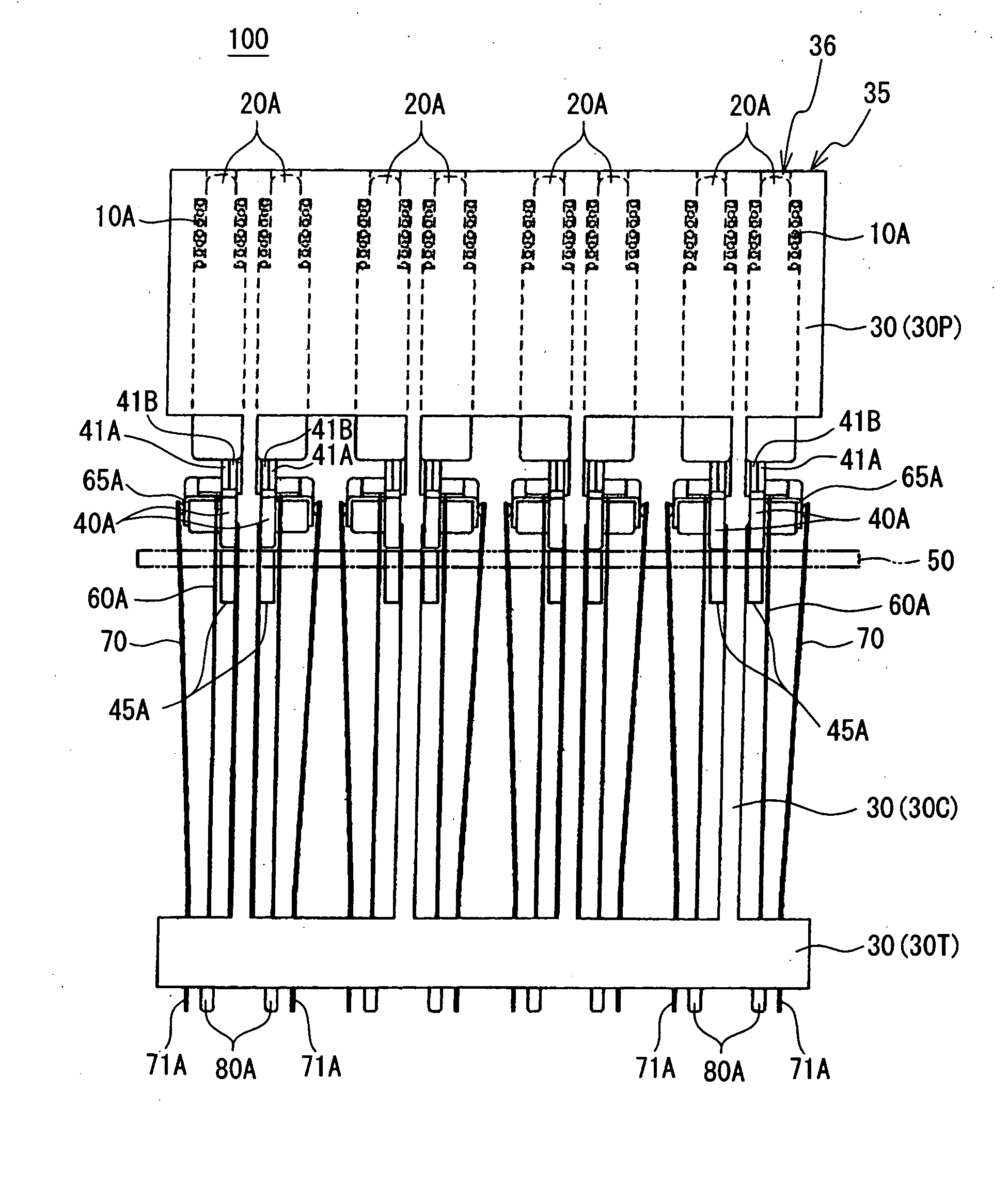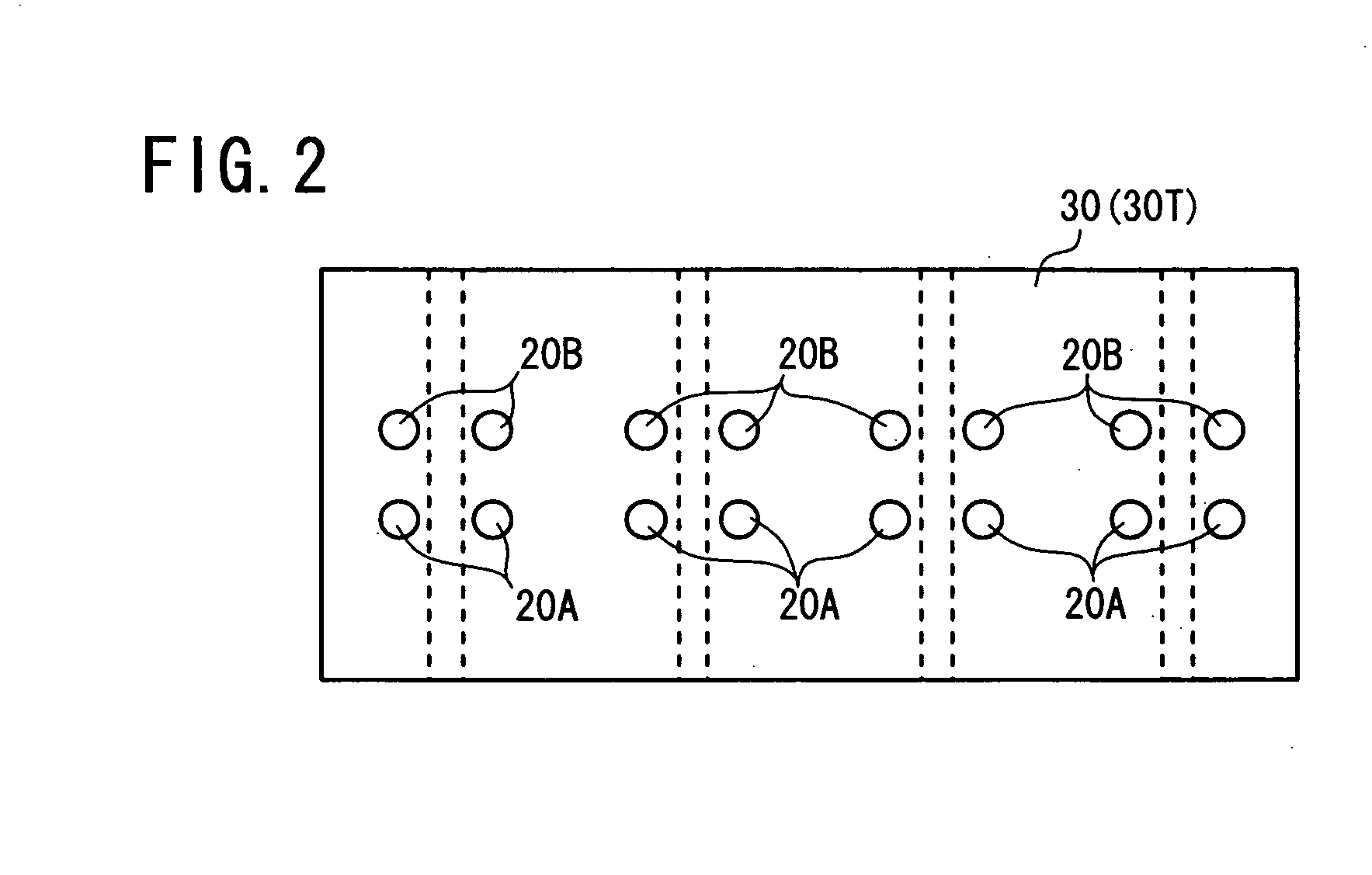Tactile Pin Display Apparatus
a display apparatus and tactile pin technology, applied in the field of can solve the problems of inability to automatically return the tactile pin, difficulty in maintaining the tactile pin in the off-state, and the inability to rotate stationary, so as to reduce the size, weight and cost of the tactile pin display apparatus, and ensure the linkage of the cam.
- Summary
- Abstract
- Description
- Claims
- Application Information
AI Technical Summary
Benefits of technology
Problems solved by technology
Method used
Image
Examples
Embodiment Construction
[0020]FIG. 1 is a schematic front view of a tactile pin display apparatus 100 according to an embodiment of the present invention, while FIG. 2 is a schematic plan view of the tactile pin display apparatus 100. The tactile pin display apparatus 100 can display four digit braille numbers, and is formed of eight tactile pin display units 200 described later (using two tactile pins 20A, 20B) arranged in a row at predetermined intervals. Thus, a first row of eight tactile pins 20A and a second row of eight tactile pins 20B are formed. Suffixes A and B are added to elements accompanied by the first and second tactile pins 20A and 20B, respectively, while these suffixes are not added to elements common to the first row and second row. FIG. 1 is a front view of the tactile pin units 200 arranged in a row as seen from the side of the first row.
[0021]Referring to FIG. 1 and FIG. 2, reference numeral 20A (20B) denotes stepped tactile pins made of stainless steel, and 40A (40B) denotes cams ma...
PUM
 Login to View More
Login to View More Abstract
Description
Claims
Application Information
 Login to View More
Login to View More - R&D
- Intellectual Property
- Life Sciences
- Materials
- Tech Scout
- Unparalleled Data Quality
- Higher Quality Content
- 60% Fewer Hallucinations
Browse by: Latest US Patents, China's latest patents, Technical Efficacy Thesaurus, Application Domain, Technology Topic, Popular Technical Reports.
© 2025 PatSnap. All rights reserved.Legal|Privacy policy|Modern Slavery Act Transparency Statement|Sitemap|About US| Contact US: help@patsnap.com



